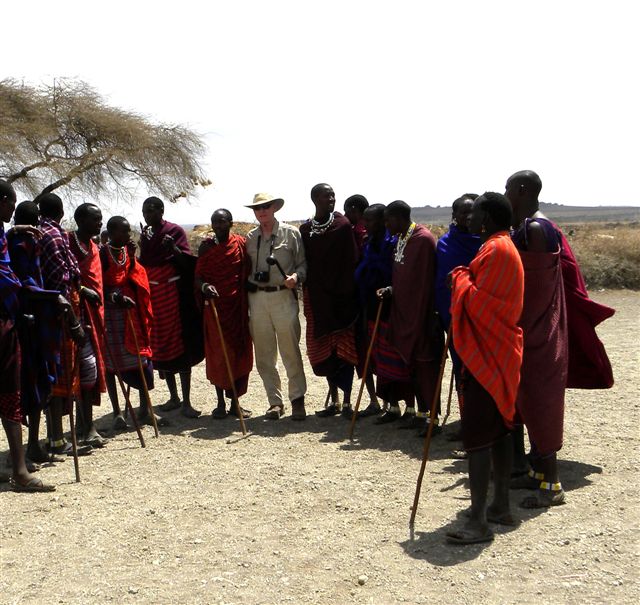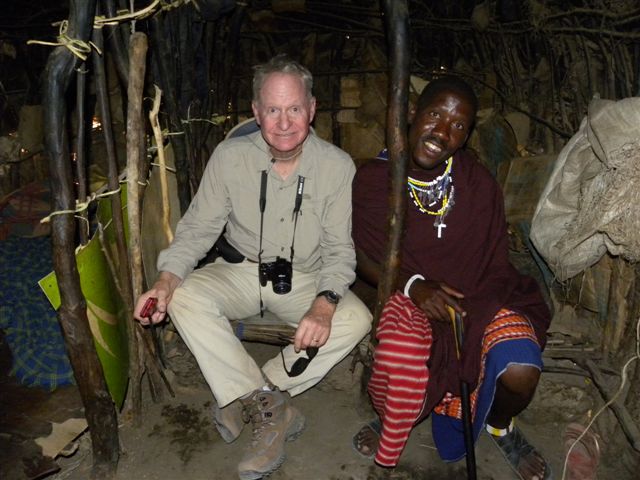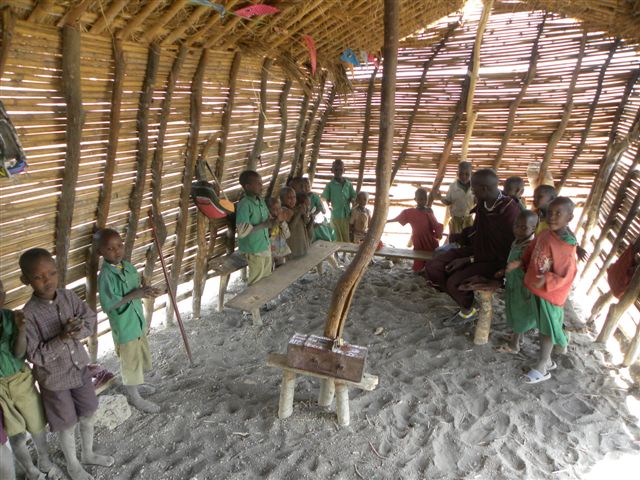Lone Visitors in a Massai Village
Our guest post comes from Bill & Bonnie Neely of: Real Travel Adventures Ezine – Your free online monthly travel magazine with hundreds of features and photos on travel to anywhere.

This Conservation Area of Tanzania is designated multiple use, for wildlife, Maasai people, and their herds of goats, sheep, and cattle. We saw many little villages of stick huts along the way and children herding the animals, dressed in colorful red blankets, their typical Maasai tribal design. They seem so happy. If we stopped to take pictures they begged for money or tried to sell us a trinket, so after a few times of paying, we took photos without stopping. The road was one bounce after another, dry with a ferocious cloud of dust from every car zooming past. It was hot but with windows open the breeze was comfortable, but we all hurriedly shut them each time we met a car. Sometimes it was like a white-out blizzard for a couple of minutes.
We stopped at a real Maasai village for a tourist event: typical war dances done by the men and marriage/harvest dances done by the women with many beads adorning them. The Maasai were the first to capitalize on making money from tourism, and years later the Ministry of Natural Resources decided to start Cultural Tours for the same reason. The Maasai encouraged us to participate in the dances and adorned me with a beaded collar for the tour. We entered a Maasai home of sticks, cardboard and bark, constructed by the wife, dabbed on top with dung for winter insulation. A smoldering stick fire was in the center, barely kept alive for cooking and heating.

The man told us all about Maasai ways. The home was totally dark, no electricity, no water except what they buy for $600 a month for the village from a delivery truck, only for drinking; they take no baths. But the people were very clean and have no bad odors at all! They clean underarms and privates with a plant that foams like soap when rubbed.
The house had a winding entrance where the mom had peed, and one room divided into three parts by a stick wall: an all purpose room with the fire, children’s bed, and parents’ bed. The beds were made of sticks with a hide across it.
Maasai can have as many wives as they want, if they pay the girl’s dad five cows. The chief of this village has 20 wives and 75 children whom he must support. Brothers and sisters after age 10 go to sleep in one sex houses in the village. At a special celebration boys are circumcised at 16 and by then know how to hunt. The Tanzanian government forbids circumcision of girls now.
Women build the houses and learn from the older women after they are married. Because herds must move to new grazing areas, the Maasai move every three months, so the wives build new homes. It takes two weeks to gather the materials and a week to build, and the women tend the children as well.
Maasai only eat cooked meat and raw milk mixed with fresh blood of the cow, if they need the energy, but a cow can be bled at the neck only twice a year without impairing its life. The only other thing they eat is corn in a porridge during harvest time. I guess they steal it because they grow no crops that we could see.

We visited the village school where about twenty pre-school kids sang to us in their language and then sang the abc song. They have no books or desks and only use the sand for their “chalk board.” I learned that children in the city schools of Tanzania also have few books or facilities and that they have never seen the amazing African wild animals so many tourists go on safari to see.
Next he led us around a big circle of trees that had jewelry made by each woman, We were to choose ones we wanted, and at the end he would tell us the price. After selecting various beads and trinkets we had decided to spend about $50 US, but he said $250. No way. We had seen most of the items in street shops much cheaper. We put most of it back and chose two bead baskets for $50 as we wanted to buy something from them. We had only US $100 bills, and they made US change…literally: Bill realized it was counterfeit, as the color was wrong and the five-dollar bill was smaller. Bill was inwardly fuming, while politely but firmly insisting the money was counterfeit and the chief kept insisting it was not. The Maasai chief, with a condescending smile, acted bewildered; we couldn’t get our $100 bill back; but finally we did.

In former times, the Maasai were considered a ferocious tribe of giants, killing with machetes and spears. I didn’t know what might happen. Although they seemed quite docile and friendly, we were the only tourists within their stick walls. I ran out to the car for help from Manase, our wonderful, personal tour guide from Abrojaley Africa Ajabu Company. We got Bill away from the increasing flair of tempers, and we drove away with what we hoped was our real money, and without a purchase. We hated not helping the locals, but we hope they learned not to cheat. After some time and when we were a safe distance away, we realized that perhaps they had been passed counterfeit money by some tourists; however, the money looked so new and unused that we suspect the chief had some way of getting to town to a printing machine?? It is possible that they were innocent, but after two weeks here we saw them as conniving gypsies who plague tourists. But it is fascinating to visit their authentic village and see their unbelievable way of life.




